MEA Sugar Substitute Market Size
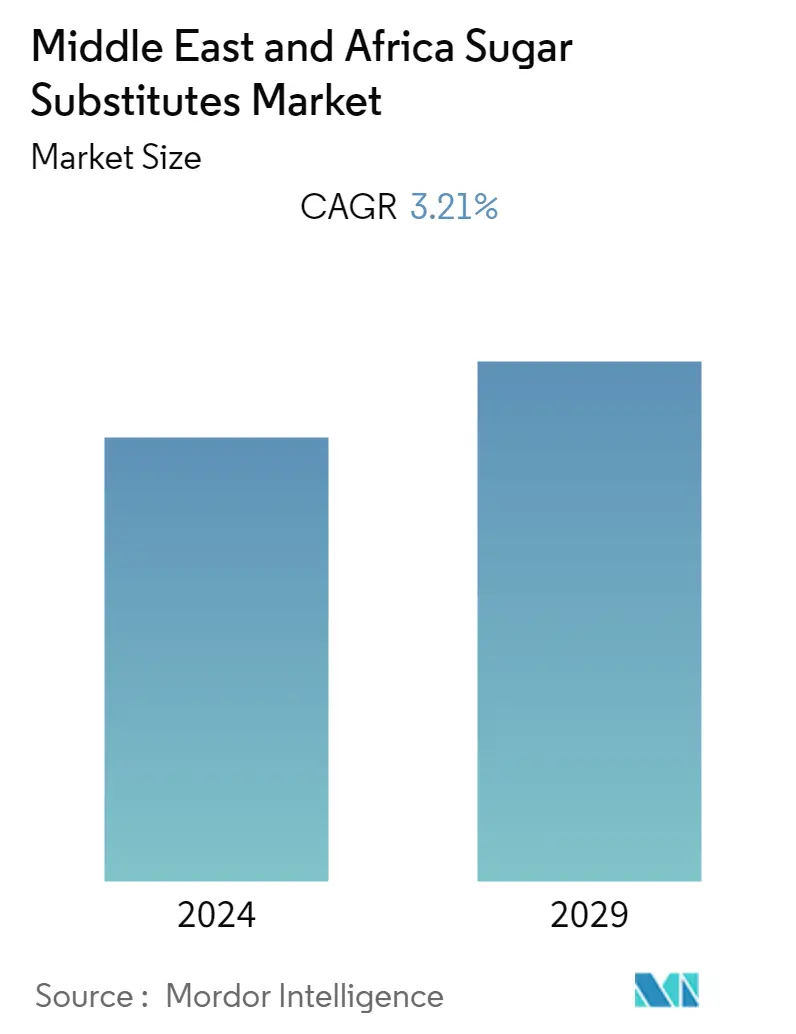
| Study Period | 2019 - 2029 |
| Base Year For Estimation | 2023 |
| Forecast Data Period | 2024 - 2029 |
| Historical Data Period | 2019 - 2022 |
| CAGR | 3.21 % |
| Market Concentration | Medium |
Major Players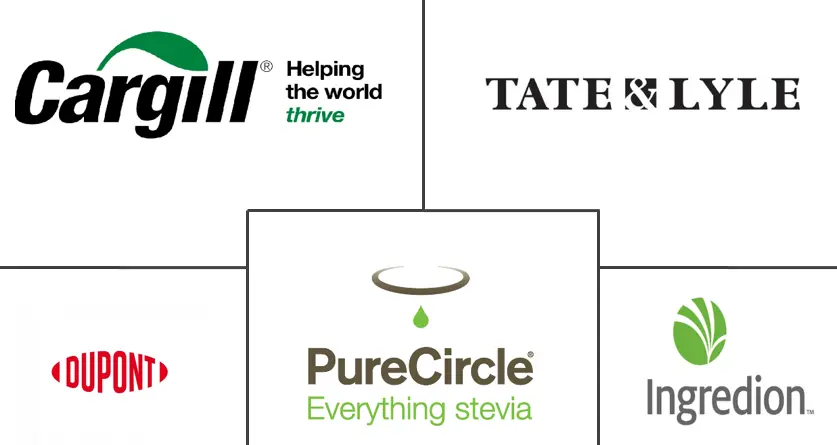
*Disclaimer: Major Players sorted in no particular order |
MEA Sugar Substitute Market Analysis
The Middle East & African sugar substitutes market is expected to register a CAGR of 3.21% during the forecast period (2020-2025).
- The changing lifestyles, increasing urbanization, rising disposable incomes, and hectic schedules of the growing working-class population have driven the consumers toward baked foods, sugar-confectionery items, and beverages, thereby, fueling the demand for sugar substitutes market.
- The demand for low-calorie sweeteners from the food and beverage manufacturers has increased in the last few years, owing to the rising concerns about obesity and diabetes, across the region.
MEA Sugar Substitute Market Trends
This section covers the major market trends shaping the MEA Sugar Substitute Market according to our research experts:
Rising Demand for Low-calorie Sweeteners
The increasing awareness regarding the health benefits of low-calorie consumable products is a major catalyst for the growth of the stevia market in South Africa. As stevia is a natural and healthy alternative to sugar, it was approved for use in South Africa in 2012. Thus, stevia is expected to emerge as one of the most popular natural sweeteners among consumers who look for healthier alternatives. This factor brings in opportunities for manufactures of stevia in the country. Moreover, companies have started to expand their production lines and invest in the manufacturing and plantation of the same. The regulations supporting the stevia market in South Africa will provide an overall goal to evaluate the agronomic potential, extraction, production efficiency, and techno-economics for the commercial production of stevioside in South Africa.
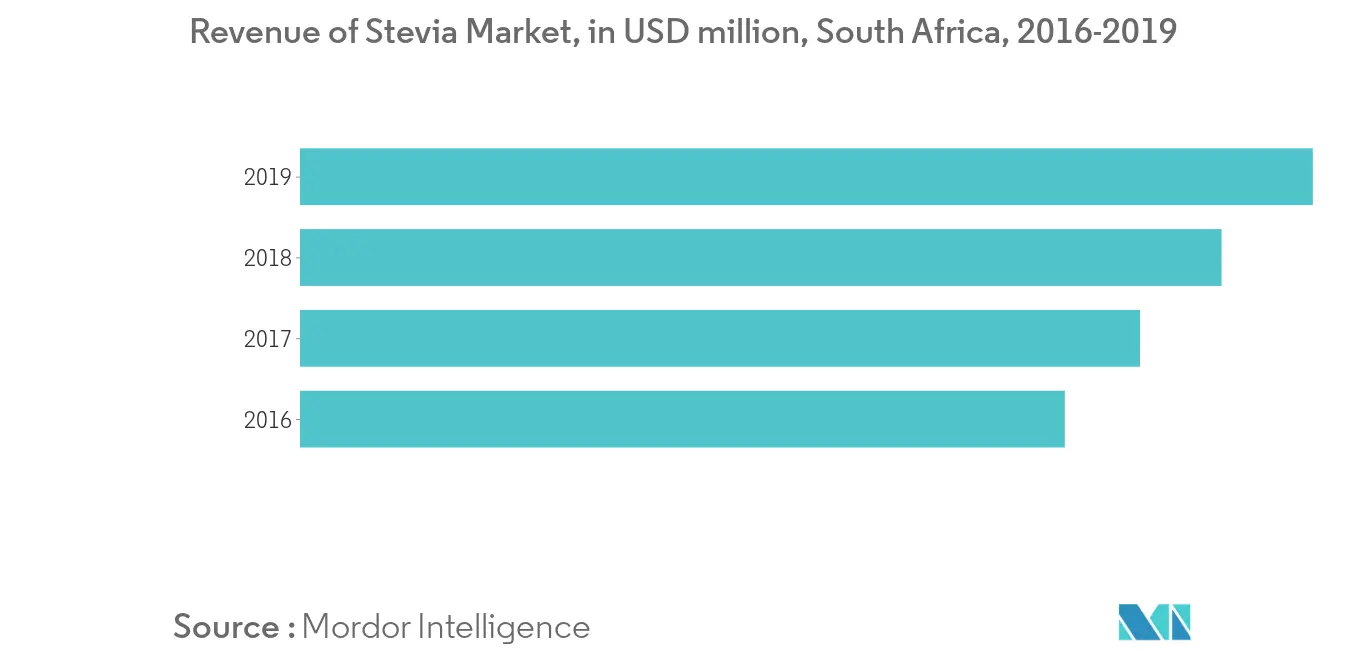
Increased Utilization in Beverages
The consumer choices have shifted away from the traditional non-alcoholic drinks and toward health-oriented beverages. This is reflected by the continuous decline in the total volume of consumption of soft drinks. The market is also responding to consumer choices by adding new products, such as ready-to-drink herbal teas and functional beverages. There is a marked increase in the number of products with natural ingredients. Manufacturers are focusing on incorporating sugar substitutes, such as stevia and natural sweetener stevia, which is an excellent sweetener choice for carbonated soft drinks offering some unique characteristics, including zero calories, 100% natural origin, and being non-caloric, tooth-friendly, non-fermenting, highly soluble, and pH, heat, photo (light), and shelf-stable.
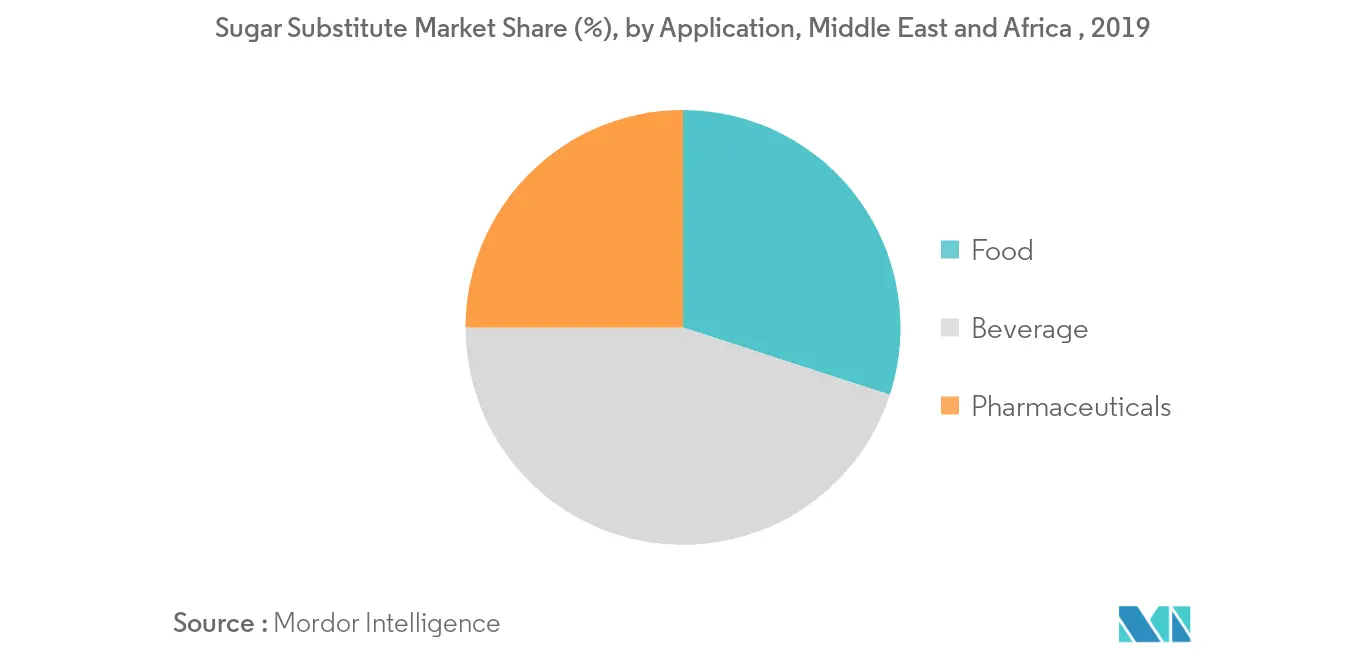
MEA Sugar Substitute Industry Overview
The Middle East & African market for sugar substitutes is consolidated, owing to the presence of large players holding the maximum shares. Emphasis is being given on mergers, expansions, acquisitions, and partnerships between the companies, along with new product developments. These are strategic approaches adopted by the leading companies to boost their brand presence among the consumers. The major players are Cargill, Tate and Lyle PLC, PureCircle Ltd, DuPont, and Ingredion Incorporated.
MEA Sugar Substitute Market Leaders
-
Cargill, Incorporated
-
Tate & Lyle PLC
-
DuPont de Nemours, Inc
-
Ingredion Incorporated
-
PureCircle Ltd.
*Disclaimer: Major Players sorted in no particular order
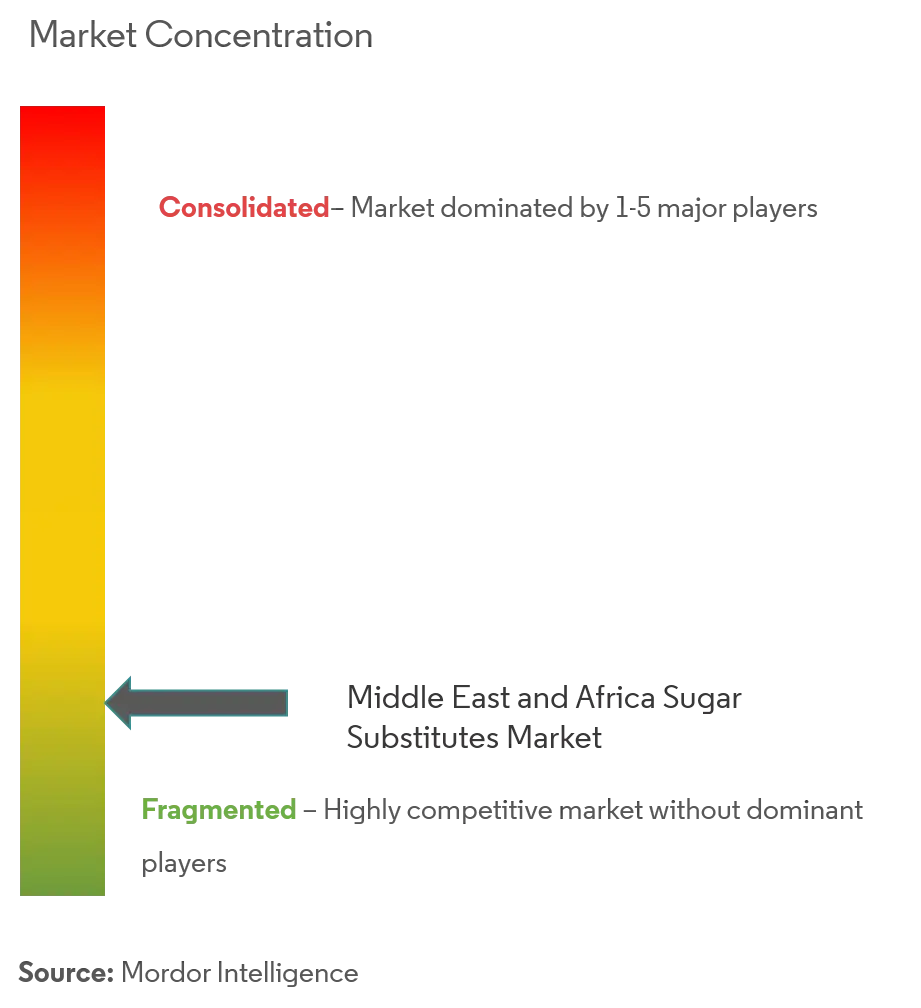
MEA Sugar Substitute Market Report - Table of Contents
1. INTRODUCTION
- 1.1 Study Assumptions and Market Definition
- 1.2 Scope of the Study
2. RESEARCH METHODOLOGY
3. EXECUTIVE SUMMARY
4. MARKET DYNAMICS
- 4.1 Market Drivers
- 4.2 Market Restraints
-
4.3 Porter's Five Forces Analysis
- 4.3.1 Threat of New Entrants
- 4.3.2 Bargaining Power of Buyers/Consumers
- 4.3.3 Bargaining Power of Suppliers
- 4.3.4 Threat of Substitute Products
- 4.3.5 Intensity of Competitive Rivalry
5. MARKET SEGMENTATION
-
5.1 By Product Type
- 5.1.1 High-intensity Sweeteners
- 5.1.1.1 Stevia
- 5.1.1.2 Aspartame
- 5.1.1.3 Cyclamate
- 5.1.1.4 Sucralose
- 5.1.1.5 Other High-intensity Sweeteners
- 5.1.2 Low-intensity Sweeteners
- 5.1.2.1 Sorbitol
- 5.1.2.2 Maltitol
- 5.1.2.3 Xylitol
- 5.1.2.4 Other Low-intensity Sweeteners
- 5.1.3 High-fructose Syrup
-
5.2 By Application
- 5.2.1 Food and Beverages
- 5.2.1.1 Bakery
- 5.2.1.2 Confectionery
- 5.2.1.3 Dairy
- 5.2.1.4 Beverages
- 5.2.1.5 Meat and Seafood
- 5.2.1.6 Other Food and Beverages
- 5.2.2 Dietary Supplements
- 5.2.3 Pharmaceuticals
-
5.3 Geography
- 5.3.1 Middle East & Africa
- 5.3.1.1 Saudi Arabia
- 5.3.1.2 South Africa
- 5.3.1.3 United Arab Emirates
- 5.3.1.4 Qatar
- 5.3.1.5 Rest of Middle East & Africa
6. COMPETITIVE LANDSCAPE
- 6.1 Most Adopted Strategies
- 6.2 Market Position Analysis
-
6.3 Company Profiles
- 6.3.1 Ingredion Incorporated
- 6.3.2 Cargill Incorporated
- 6.3.3 GLG Life Tech Corp.
- 6.3.4 Tate & Lyle PLC
- 6.3.5 DuPont de Nemours Inc.
- 6.3.6 HYET Sweet
- 6.3.7 PureCircle Ltd
- 6.3.8 Granular AB
- *List Not Exhaustive
7. MARKET OPPORTUNITIES AND FUTURE TRENDS
** Subject To AvailablityMEA Sugar Substitute Industry Segmentation
The Middle East & African sugar substitutes market is segmented by type, into high-intensity sweeteners, low-intensity sweeteners, and high-fructose syrup. The high-intensity sweeteners segment is further classified into stevia, aspartame, cyclamate, sucralose, and other high-intensity sweeteners. The low-intensity sweeteners are further segmented into sorbitol, maltitol, xylitol, and other low-intensity sweeteners. Based on application, the market is segmented into food and beverages, dietary supplements, and pharmaceuticals. The food and beverages segment is further classified into bakery, confectionery, dairy, beverages, meat and seafood, and other food and beverages. This report further analyzes the scenario in Saudi Arabia, South Africa, the United Arab Emirates, Qatar, and the rest of Middle East & Africa.
| By Product Type | High-intensity Sweeteners | Stevia |
| Aspartame | ||
| Cyclamate | ||
| Sucralose | ||
| Other High-intensity Sweeteners | ||
| By Product Type | Low-intensity Sweeteners | Sorbitol |
| Maltitol | ||
| Xylitol | ||
| Other Low-intensity Sweeteners | ||
| By Product Type | High-fructose Syrup | |
| By Application | Food and Beverages | Bakery |
| Confectionery | ||
| Dairy | ||
| Beverages | ||
| Meat and Seafood | ||
| Other Food and Beverages | ||
| By Application | Dietary Supplements | |
| Pharmaceuticals | ||
| Geography | Middle East & Africa | Saudi Arabia |
| South Africa | ||
| United Arab Emirates | ||
| Qatar | ||
| Rest of Middle East & Africa |
MEA Sugar Substitute Market Research FAQs
What is the current Middle East & Africa Sugar Substitutes Market size?
The Middle East & Africa Sugar Substitutes Market is projected to register a CAGR of 3.21% during the forecast period (2024-2029)
Who are the key players in Middle East & Africa Sugar Substitutes Market?
Cargill, Incorporated, Tate & Lyle PLC, DuPont de Nemours, Inc, Ingredion Incorporated and PureCircle Ltd. are the major companies operating in the Middle East & Africa Sugar Substitutes Market.
What years does this Middle East & Africa Sugar Substitutes Market cover?
The report covers the Middle East & Africa Sugar Substitutes Market historical market size for years: 2019, 2020, 2021, 2022 and 2023. The report also forecasts the Middle East & Africa Sugar Substitutes Market size for years: 2024, 2025, 2026, 2027, 2028 and 2029.
Middle East & Africa Sugar Substitutes Industry Report
Statistics for the 2024 Middle East & Africa Sugar Substitutes market share, size and revenue growth rate, created by Mordor Intelligence™ Industry Reports. Middle East & Africa Sugar Substitutes analysis includes a market forecast outlook to 2029 and historical overview. Get a sample of this industry analysis as a free report PDF download.



